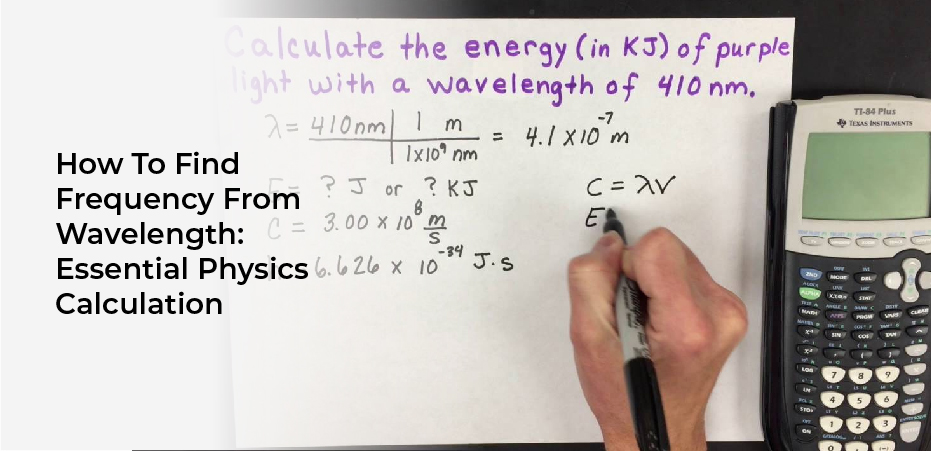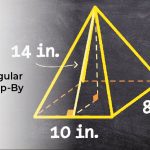Are you struggling to understand the relationship between frequency and wavelength in physics? Do you find it challenging to calculate frequency from wavelength? If so, you’re not alone. Many students and professionals in the field of physics struggle with this essential calculation.
But don’t worry, we’re here to help.
In this article, we’ll provide you with a step-by-step guide on how to find frequency from wavelength. We’ll explain the concept of frequency in physics and the formula used to calculate it. By the end of this article, you’ll be able to apply the frequency-wavelength relationship in practical scenarios and confidently solve physics problems that require this calculation.
So, let’s get started!
Understanding the Relationship between Frequency and Wavelength
Want to know how frequency and wavelength are related? Let’s dive in and explore this essential physics calculation!
The frequency of a wave refers to the number of times it completes a cycle in a given amount of time. On the other hand, the wavelength represents the distance between two consecutive points of the same phase on the wave.
There is an inverse relationship between frequency and wavelength. This means that as the frequency of a wave increases, its wavelength decreases and vice versa. This relationship is expressed mathematically as λ = c/f, where λ is the wavelength, c is the speed of light, and f is the frequency.
Understanding this relationship is crucial in various applications, from radio transmission to medical imaging.
Definition and Concept of Frequency in Physics
You can easily understand the concept of frequency in physics by visualizing the number of times a wave oscillates per second. Frequency is defined as the number of complete cycles that a wave undergoes in one second, and is measured in Hertz (Hz).
In other words, it’s the rate at which a wave oscillates or vibrates back and forth. The frequency of a wave is closely related to its wavelength, which is the distance between two adjacent points on a wave that are in phase (i.e. at the same point in their cycle).
As the frequency of a wave increases, its wavelength decreases, and vice versa. Understanding this relationship between frequency and wavelength is crucial in many areas of physics, including optics, acoustics, and electromagnetic radiation.
Formula for Calculating Frequency from Wavelength
Let’s dive into the formula that helps us calculate frequency based on wavelength in a simple and straightforward manner. The formula is as follows: frequency = speed of light ÷ wavelength.
The speed of light is a constant value of approximately 299,792,458 meters per second, while the wavelength is the distance between two consecutive peaks or troughs of a wave.
This formula is used in a variety of fields, such as optics, electronics, and acoustics. For example, if you know the wavelength of a sound wave in air, you can use this formula to find its frequency. Similarly, if you know the wavelength of a radio wave, you can calculate its frequency to tune into that particular radio station.
Understanding this formula is crucial in many physics applications, and it can be useful in solving problems related to waves and their properties.
Step-by-Step Guide to Finding Frequency from Wavelength
Get ready to easily calculate the frequency of waves with this step-by-step guide! First, identify the wavelength of the wave you’re trying to find the frequency of. This can be done by measuring the distance between two consecutive crests or troughs of the wave.
Once you have the wavelength, use the formula f = c/λ to find the frequency, where ‘f’ is the frequency, ‘c’ is the speed of light (in a vacuum), and ‘λ’ is the wavelength. Next, plug in the values you have for ‘c’ and ‘λ’ into the formula and solve for ‘f’.
Make sure to use the correct units for your measurements (such as meters or nanometers) and for the speed of light (such as meters per second or nanometers per second). Once you’ve solved for ‘f’, you’ll have the frequency of the wave you were calculating.
With this simple guide, you can now easily find the frequency of any wave given its wavelength!
Applying Frequency-Wavelength Relationship in Practical Scenarios
It’s amazing how the frequency-wavelength relationship can be applied in practical scenarios, allowing us to better understand and interact with the world around us.
For example, this relationship is essential in the field of radio communication. Radio waves have different frequencies that determine the type of signal they carry. By knowing the frequency of a radio wave, we can determine what kind of information it carries, whether it’s a song, news, or a weather report. This information is then translated into sound or images that we can understand.
Moreover, the frequency-wavelength relationship is also important in the field of medicine. For instance, doctors use ultrasound waves to detect and diagnose medical conditions. Ultrasound waves have a frequency that’s higher than what the human ear can hear. By measuring the wavelength of these waves, doctors can determine the location and size of tumors, blood clots, or other abnormalities in the body. This information is then used to provide a diagnosis and treatment plan for patients.
Overall, the frequency-wavelength relationship plays a crucial role in various practical scenarios, making it an essential physics calculation to learn.
Frequently Asked Questions
How do frequency and wavelength relate to the speed of light?
You can calculate the frequency of a wave by dividing the speed of light by its wavelength. The relationship between frequency and wavelength is inverse, meaning that as one increases, the other decreases.
What are some common units of measurement for frequency and wavelength?
“You may measure frequency in hertz (Hz), kilohertz (kHz), or megahertz (MHz), while wavelength can be measured in meters, centimeters, or nanometers. These units help you understand the properties of waves and their behavior in different mediums.” ‘Understanding the properties of waves and their behavior in different mediums is important in fields such as communication, optics, and acoustics.’
Can frequency and wavelength be used to determine the energy of a wave?
Yes, you can use frequency and wavelength to determine the energy of a wave. The energy of a wave is directly proportional to its frequency and inversely proportional to its wavelength.
How does the frequency-wavelength relationship apply to sound waves and electromagnetic waves?
You can use the frequency-wavelength relationship to understand both sound waves and electromagnetic waves. The frequency of a wave is inversely proportional to its wavelength, meaning that as frequency increases, wavelength decreases and vice versa.
What are some real-world applications of understanding frequency and wavelength?
You can use your understanding of frequency and wavelength in numerous real-world applications. For instance, analyzing radio signals, designing musical instruments, and creating medical imaging equipment all rely on this knowledge.
Conclusion
So, you now know how to find frequency from wavelength! Remember, frequency and wavelength are two important concepts in physics that are closely related.
Frequency refers to the number of waves that pass through a point in one second, while wavelength is the distance between two consecutive peaks or troughs of a wave.
To calculate frequency from wavelength, you simply need to use the formula: frequency = speed of light/wavelength. By following the step-by-step guide we provided, you can easily find the frequency of any wave.
This knowledge can be useful in many practical scenarios, such as in the field of telecommunications, where you need to understand how frequencies and wavelengths are used to transmit information through different mediums.
Keep exploring the fascinating world of physics!


